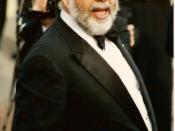Tim O'Brien's memoir, "If I Die in a Combat Zone", is an example of literary art depicting war. O'Brien's reluctance to fight in the war makes this a different kind of war art. The movie "Apocalypse Now", directed by Francis Ford Coppola, also depicts war in an extraordinary way. They are very much alike in that they both explore the emotions and morals of humans. "If I Die in a Combat Zone", and "Apocalypse Now" portray the unfathomable mysteries of America's venture into Vietnam.
Long admired for its passion, poetry and eccentricity, "Apocalypse Now" is one of the few American movies that deals with the harsh reality of emotional experiences in war. It explores the things that drove and undermined the war effort in Southeast Asia. The movie consists of a series of set pieces, just as "If I Die in a Combat Zone" does. The most famous is the assault on the village, opening with the helicopter loudspeakers blasting Wagner at the terrified students and teachers, and continuing with Lt.
Kilgore and his bravado on the beach, "I love the smell of napalm in the morning." Lt. Kilgore walked around the beach, and when a bomb hit the sand, he was the only one standing while everyone else ducked. Mad Mark, in If I Die in a Combat Zone, is similar to Lt. Kilgore; he "walked with a lanky, easy, silent, fearless stride. He wore tiger fatigues, not for their camouflage, but for their look" (O'Brien 81). Many viewers and readers may think these characters were used to show different views on war, but I think Coppola and O'Brien were mocking the soldier's carefree attitude. "Apocalypse Now" portrays the war as fundamentally misconceived and mismanaged, just as Tim O'Brien does in "If I...


